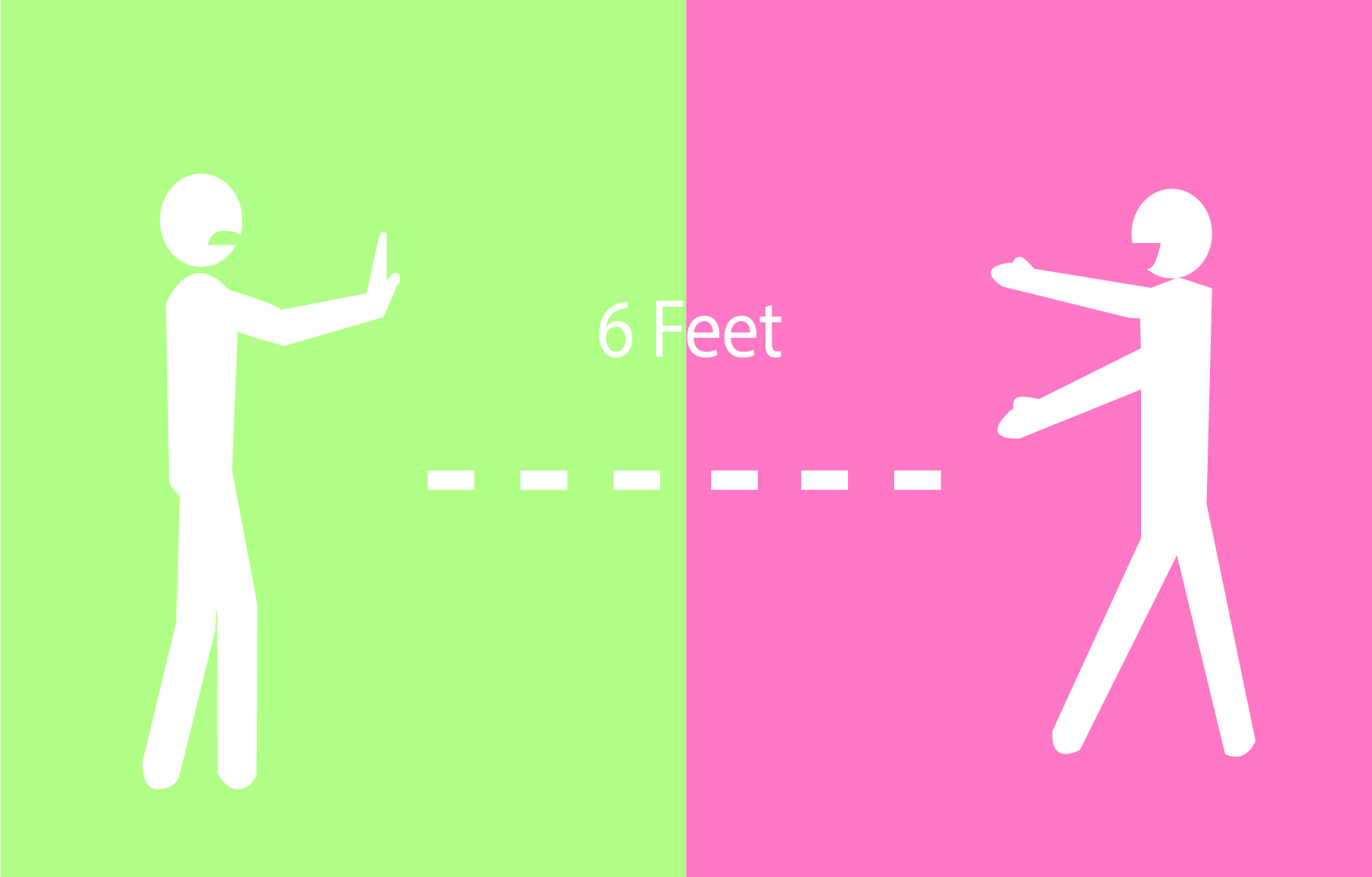
With the province slowly but surely giving the green light for businesses to start opening their doors to the general public as we enter Phase 2 of Premier Doug Ford’s reopening strategy, we have to remain vigilant of the new norms introduced as a result of COVID-19.
One of these new norms includes physical distancing—the act of standing two metres apart from people outside of your household and 10-person social circle.
For some people, this is not too much to ask for, while others may find it hard to physically distance.
But why is that so?
Dr. Weizhen Dong, an associate professor in UW’s Department of Sociology, explains how difficulty in physical distancing is a macro-sociological issue, meaning that it affects a collective group of people—specifically for those who are a “high-risk population.”
Dr. Dong said that some social determinants of health are more critical in regard to physical distancing during the pandemic.
These refer to factors such as housing, income, employment, education, social capital, gender, ethnicity, race and housing.
“People [who] reside in good housing are able to have individual personal spaces even if a family member [is] ill and [needs a separate] living area, when staying at home, they are still able to live and enjoy a relatively normal life,” Dr. Dong said.
In-house transmission of disease is more likely to occur for those who live in crowded housing, where family members may share space such as a bedroom or bathroom.
In regard to employment, Dr. Dong expresses that those who are in healthcare and eldercare facilities face the highest risk compared to people who work in other high-risk settings, people working from home, or who are unemployed.
Since COVID-19 has infected more people in healthcare and eldercare settings compared to other workplaces, Dr. Dong suggests it should be a national priority to effectively protect healthcare workers and those who are close to them during this epidemic.
“Education is important,” Dr. Dong said.
“Well-educated persons would be able to seek knowledge on how the virus transmit[s] in order to find ways to effectively prevent oneself from being infected, and would be very conscious about physical distancing. On the other hand, those who are yet to become well-educated won’t be able to see the risk factor associated with physical distance.”
This will result in less effort to protect themselves and follow health regulations such as physical distancing, wearing a mask, and washing your hands often, among other COVID-19 prevention strategies.
Dr. Martin Cooke, who is also an associate professor at UW’s Department of Sociology, adds that physical distancing is also having a negative impact on a lot of people’s incomes since most businesses’ and companies are forced to close their doors and let go of part-time workers.
“People who work in grocery stores might be working, but are putting themselves at some higher risk [of] infection because of it. On the other hand, people in some industries, such as knowledge workers like lawyers or university professors, have well-paid jobs that can be done from home. Our incomes have not been directly affected,” Dr. Cooke said.
Dr. Cooke said that age certainly plays a factor when it comes to difficulty with physical distancing.
“If we think of the life course, people tend to be in different types of situations at different ages. Young adults like university students might be stuck at home with parents who are working, and perhaps with younger siblings, when they are at a life stage that typically involves a lot of sociality,” Dr. Cooke said.
Age also plays a major role in Canada’s hardest hit demographic, the elderly.
“Eldercare facilities became high-risk settings likely due to funding shortage and severe shortage of caregivers,” Dr. Dong said.
“The struggling long-term care sector failed to protect the vulnerable aging residents from the coronavirus, since professional caregivers tend to be part-time workers with low wages who have to work at different settings to earn a full-time employment income.”
Dr. Dong believes that eldercare facilities that managed to keep infection-free must have implemented extraordinary measures.
But even before they’re elderly, Dr. Cooke said that it is also challenging for people who are a bit older and are home as parents of young children.
“People who are in older ages are at greater risk [of] severe infection, as we have seen,” Dr. Cooke said. He speculates that physical distancing and isolating might be difficult for those who are alone in a one-person household, because they might usually rely on others for instrumental support—shopping and so on. “For those older people, it might be a challenge having those needs met in this situation.”
Above all, Dr. Dong and Dr. Cooke both agree that social support and capital are key determinants of being able to physically distance.
Dr. Cooke explains social capital to be the connections that we have to others, and how those social networks help us get things done in our lives.
Dr. Cooke speculates that there might be some people [who] might find that their social networks and connections improve as a result of this pandemic, since they are actively looking for ways to help one another.
“I would bet that there are people who find that their networks wither somewhat as a result of this isolation and the inability to connect to people as easily through work, school, or social activities,” Dr. Cooke said.
“Family, community, and social services can make a difference for our mental and physical health,” Dr. Dong said.
“During this pandemic, all of us need to feel connected while practicing physical distancing. It is time to promote a caring community.”
Dr. Dong suggests finding ways to connect with others and to find interesting things to do each day to cope with the struggle of physical distancing and self-isolation.





























